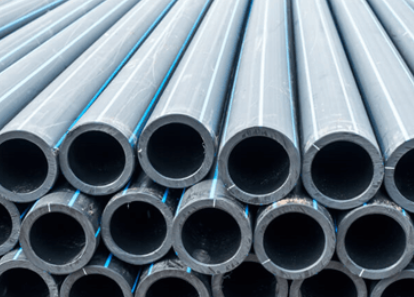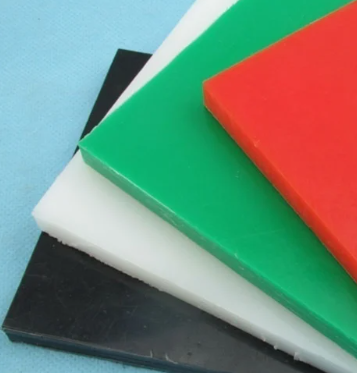- Understanding the Role of Geomembrane Liners in Waste Management
- Innovations in Geomembrane Liners for Water Management
- Geomembrane Liners: A Comprehensive Guide
- The Future of Geomembrane Liners in Civil Engineering
- Geomembrane Liners: Enhancing Landfill Stability
Manager:Alvin Wang
WhatsApp:+62 8983806051
Tel:+86 10-5797-1075
Email:steelwang@okorder.com
Address:3rd Floor, No.2 Building, No.1 Sanlihe Road
Which is better HDPE or Uhmw?
When it comes to selecting geomembranes for various engineering and environmental applications, two commonly considered materials are High Density Polyethylene (HDPE) and Ultra-High Molecular Weight Polyethylene (UHMW). These materials serve as the building blocks for composite geomembranes, which find extensive use in containment systems, landfill liners, pond liners, and other critical environmental protection projects. Understanding the properties, advantages, and limitations of HDPE and UHMW is essential for making informed decisions regarding their suitability for specific projects.

Composite Geomembrane: An Overview
Composite geomembranes, as the name suggests, combine different materials to achieve optimal performance in containment applications. Typically, they consist of multiple layers, each offering unique properties to enhance overall functionality. These layers may include Geotextiles, HDPE, UHMW, and other materials, depending on the specific requirements of the project.
High Density Polyethylene Geomembrane: Strength and Durability
hdpe Geomembranes are renowned for their exceptional strength and durability. They are manufactured from high-density polyethylene resins, which undergo rigorous processing to ensure uniformity and integrity. HDPE geomembranes exhibit high tensile strength, puncture resistance, and chemical inertness, making them suitable for a wide range of applications, including landfill liners, mining leach pads, and pond liners.
The molecular structure of HDPE imparts excellent resistance to environmental stress cracking, UV degradation, and harsh chemical environments. These geomembranes offer long-term performance and require minimal maintenance, making them a cost-effective solution for critical containment projects.
UHMW Geomembrane: Low Friction and Abrasion Resistance
On the other hand, UHMW geomembranes possess unique properties that make them ideal for specific applications. Ultra-High Molecular Weight Polyethylene is characterized by its extremely long molecular chains, which contribute to exceptional wear resistance, low friction, and self-lubricating properties. These geomembranes excel in applications where abrasion resistance and sliding friction are paramount, such as in conveyor systems, silo liners, and bulk material handling operations.
UHMW geomembranes offer superior impact strength and can withstand heavy loads without deformation or degradation. Additionally, their low coefficient of friction reduces the risk of material buildup and allows for smooth material flow, enhancing operational efficiency in various industrial settings.
Comparative Analysis: HDPE vs. UHMW
When evaluating the suitability of HDPE and UHMW geomembranes for specific projects, several factors must be considered:
1. Mechanical Properties: HDPE geomembranes exhibit higher tensile strength and puncture resistance compared to UHMW. They are better suited for applications where structural integrity and containment strength are critical.
2. Chemical Resistance: Both HDPE and UHMW geomembranes offer excellent chemical resistance. However, HDPE may outperform UHMW in certain aggressive chemical environments due to its denser molecular structure.
3. UV Stability: HDPE geomembranes typically have better UV resistance compared to UHMW. This makes them more suitable for exposed applications where prolonged exposure to sunlight is a concern.
4. Friction and Wear: UHMW geomembranes excel in applications requiring low friction and high wear resistance. They are preferred for applications such as chute liners, conveyor belts, and other high-friction environments.
5. Cost Considerations: HDPE geomembranes are generally more cost-effective than UHMW, making them a preferred choice for projects with budget constraints. However, the specific requirements of the project and the long-term performance expectations should also be taken into account.

Conclusion: Selecting the Right Geomembrane
In conclusion, the choice between HDPE and UHMW geomembranes depends on the specific requirements of the project, including mechanical properties, chemical resistance, UV stability, friction, and cost considerations. While HDPE geomembranes offer superior strength, durability, and UV resistance, UHMW geomembranes excel in applications requiring low friction and high wear resistance.
For composite geomembranes, incorporating both HDPE and UHMW layers can provide a balanced approach, leveraging the strengths of each material to achieve optimal performance. By carefully evaluating the project requirements and consulting with experienced engineers and geomembrane manufacturers, stakeholders can make informed decisions to ensure the success of their containment projects."
-
2024-06-13Geomembrane is not plastic cloth






